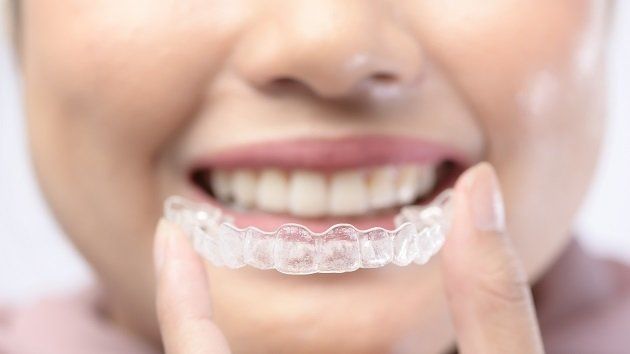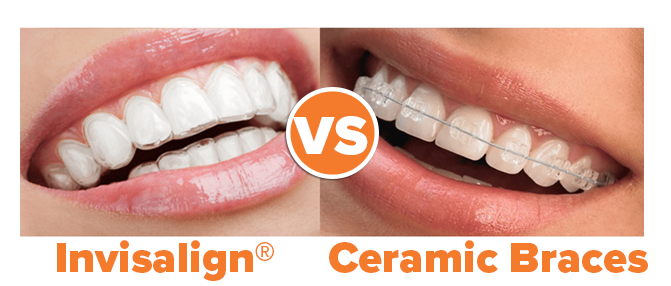Invisalign vs. Standard Dental braces: Which Alternative Is Right for You?
When considering orthodontic treatment, the selection between Invisalign and standard braces presents a number of crucial variables that merit cautious analysis. Invisalign supplies a very discreet alternative with removable aligners, while conventional braces supply an extra noticeable yet reliable remedy for extreme imbalance. Each alternative incorporates distinctive advantages and drawbacks related to aesthetic appeals, convenience, therapy period, and price. Recognizing these subtleties is crucial for making an informed decision that aligns with your individual choices and way of living. The inquiry continues to be: which alternative will finest satisfy your orthodontic requirements and expectations?
Introduction of Treatment Choices

On the other hand, standard braces consist of steel braces and cables that are adhered to the teeth. This method uses continuous stress over time to attain positioning. While effective for complicated orthodontic problems, typical dental braces require normal check outs for modifications and can posture difficulties in preserving oral hygiene as a result of the difficulty of cleansing about cables and braces.
Both alternatives have their advantages, and the selection commonly rests on certain dental conditions, way of living preferences, and patient conformity. Inevitably, speaking with an orthodontic expert is essential for establishing one of the most suitable treatment plan tailored to individual needs. Understanding the nuances of each option can considerably influence the general success of orthodontic therapy.
Aesthetic Considerations
A significant aspect affecting the option in between Invisalign and typical braces is the aesthetic charm each treatment offers. Invisalign aligners are crafted from clear plastic, making them basically undetectable when used.
On the other hand, standard braces contain metal braces and cables, which can be more recognizable. While innovations in orthodontic innovation have brought about the advancement of smaller braces and colored elastics, traditional dental braces still keep an even more obvious account. For some people, the exposure of braces may hinder them from seeking needed therapy.
Inevitably, the option in between Invisalign and standard braces may depend upon personal choices relating to looks. Clients that prioritize discretion often favor Invisalign, while those who are much less worried regarding presence may go with traditional dental braces. Comprehending the visual implications of each alternative is vital for making a notified decision that straightens with one's way of living and choices.
Convenience and Convenience

In regards to convenience, Invisalign aligners are removable, enabling individuals to appreciate their favorite foods without constraint and maintain optimum dental hygiene. Brushing and flossing are streamlined, as the aligners can be secured during these routines, whereas traditional dental braces call Your Domain Name for cautious navigating around brackets and browse around here wires.
In comparison, conventional braces necessitate normal changes, making them less hassle-free for those with active schedules. In general, the comfort and benefit of Invisalign make it an enticing choice for many people looking for orthodontic treatment.
Treatment Duration and Efficiency
While both Invisalign and standard dental braces work in fixing oral misalignments, the period of therapy can vary significantly between the 2 alternatives. Typically, Invisalign treatment can take anywhere from 12 to 18 months, relying on the complexity of the case. The clear aligners work by gradually shifting teeth right into their desired settings, and regular follow-ups with an orthodontist help guarantee progression continues to be on track.
In contrast, standard dental braces typically require a longer commitment, normally varying from 18 months to 3 years. This is because of their set nature and using cords and braces, which can be more efficient for serious imbalances and complicated situations (Invisalign). The treatment effectiveness of conventional braces is well-documented, as they permit accurate modifications and greater control over tooth movement
Ultimately, the choice between Invisalign and traditional braces may hinge on both the expected therapy period and the specific oral concerns available. Consulting with an orthodontist is vital, as they can supply tailored suggestions based on private demands, ensuring the selected technique aligns with desired results and durations.
Price Contrast and Insurance Coverage Choices
Cost plays a substantial function in the decision-making process for people taking into consideration orthodontic treatment, whether choosing Invisalign or traditional dental braces. Typically, the cost of Invisalign arrays from $3,000 to $8,000, while traditional dental braces commonly set you back between $2,000 and $6,000. Factors affecting these costs consist of the complexity of the instance, the period of treatment, and geographical place.
Lots of dental insurance policy plans give partial insurance coverage for orthodontic treatments, however the specifics can vary commonly. Generally, typical dental braces may be a lot more frequently covered by insurance policy plans compared to Invisalign, which some insurance providers classify as an aesthetic treatment.
Additionally, several orthodontic methods supply flexible layaway plan, making both treatment alternatives a lot more easily accessible. Clients need to ask about possible financing options and discount rates for upfront payments. Reviewing the total expense, including insurance this hyperlink coverage advantages and layaway plan, is important for making a notified decision that aligns with both visual preferences and budget plan considerations.

Conclusion
In recap, the selection between Invisalign and conventional braces depends upon multiple aspects, including aesthetic preferences, comfort, treatment period, and price. Invisalign offers a discreet, detachable alternative that promotes dental health and nutritional adaptability, while conventional dental braces might be a lot more ideal for complex oral problems and usually come at a lower cost point. Inevitably, consultation with an orthodontist is important to examine specific conditions and establish the most appropriate treatment alternative for accomplishing optimum dental alignment.
When thinking about orthodontic therapy, the option between Invisalign and conventional dental braces provides numerous essential factors that merit careful evaluation.Contrasting Invisalign and standard braces reveals distinct treatment choices for orthodontic correction.While both Invisalign and traditional dental braces are effective in fixing oral imbalances, the duration of treatment can differ dramatically between the 2 alternatives.Cost plays a considerable function in the decision-making procedure for individuals taking into consideration orthodontic therapy, whether deciding for Invisalign or conventional braces.In recap, the choice between Invisalign and typical braces pivots on numerous factors, consisting of visual choices, convenience, therapy period, and expense.